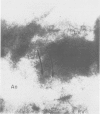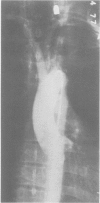Abstract
Between July 1962 and July 1978, 29 patients )23 male and 6 female) from 17 to 48 years of age were followed from two weeks to 15 years after penetrating cardiac injuries involving right ventricle (12), right atrium (6), left ventricle (8), left atrium (2), and pulmonary conus (1). Thoracotomies were performed on all patients either in the emergency room during resuscitation or in the operating room. Repair of the injuries were carried out. All patients were followed for presence of residual cardiac damage. To our surprise, secondary complications were noted in 15 of the 29 patients as follows: Coronary damage (3), pseudoanuerysm (2), bullet embolus (1), VSD (4), recurrent pericarditis (1), mitral valve injury (2), aorta caval (1), and aorto pulmonary fistula (1). Between July 1962 and July 1974, only symptomatic patients with subjective and objective findings had detailed cardiac evaluations. Eight of 20 patients were found to have secondary cardiac complications. Since July 1974, seven of nine patients underwent a posttraumatic cardiac evaluation. Six of the seven patients were found to have significant cardiac lesions which were unrecognized at the time of initial operation. The incidence of posttraumatic remediable cardiac lesions is probably higher than previously suspected. An aggressive, detailed postoperative evaluation is recommended for all patients with penetrating cardiac injuries.
Full text
PDF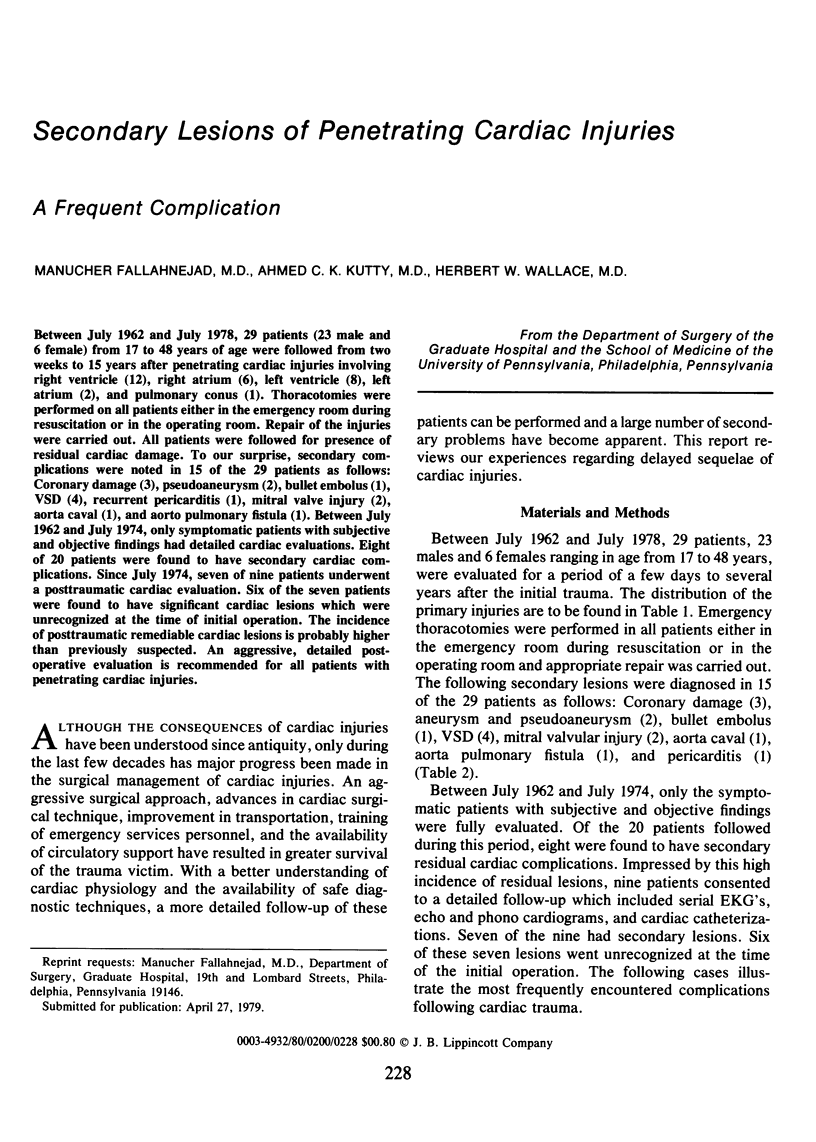
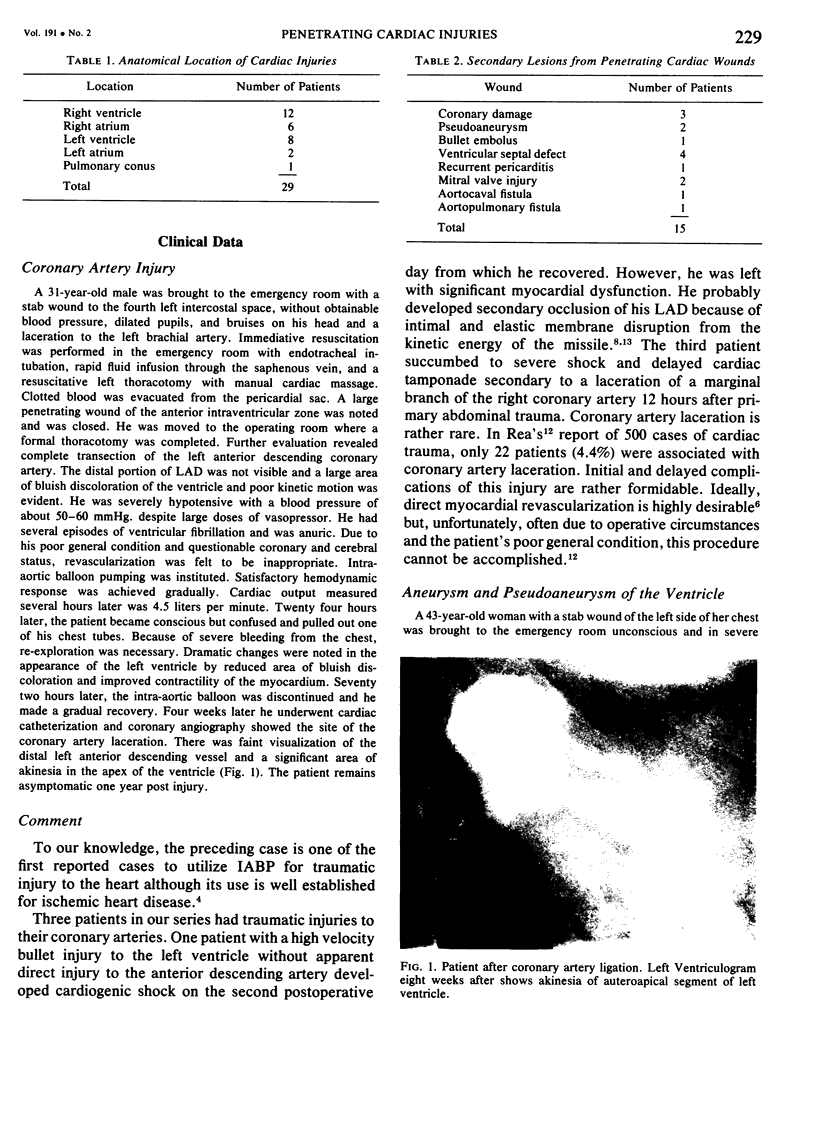
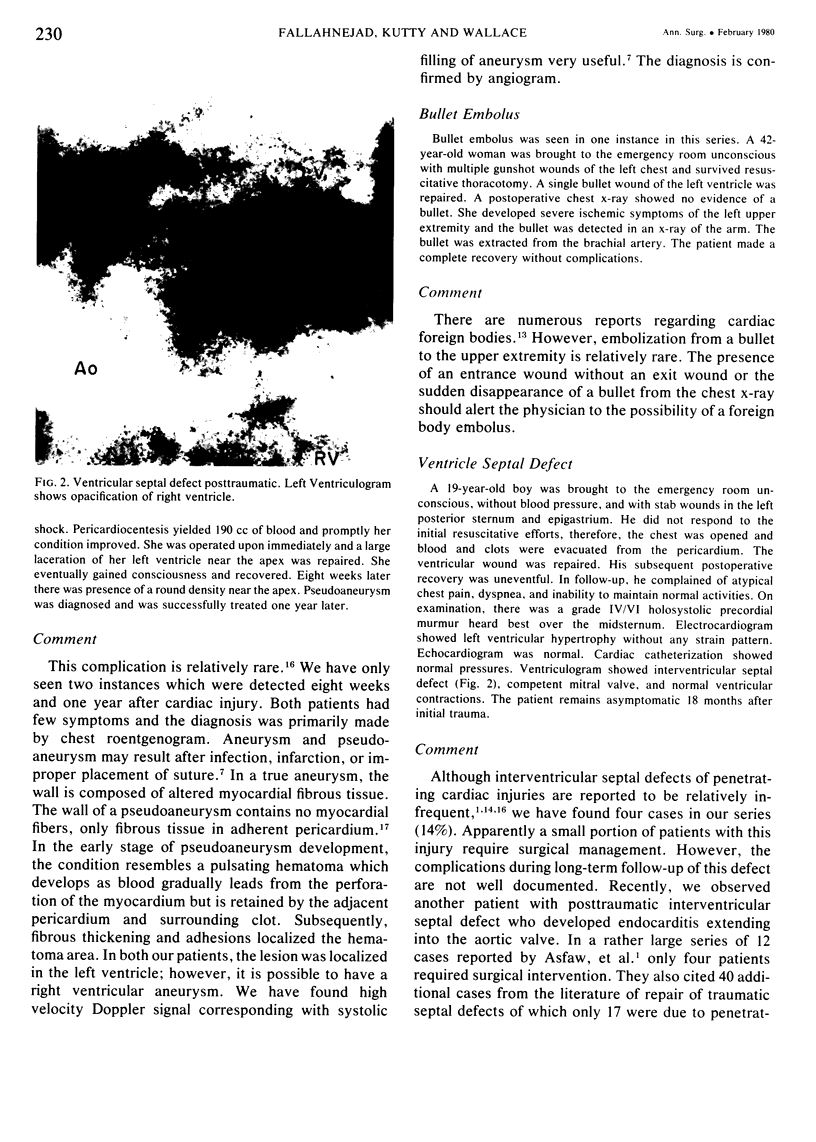
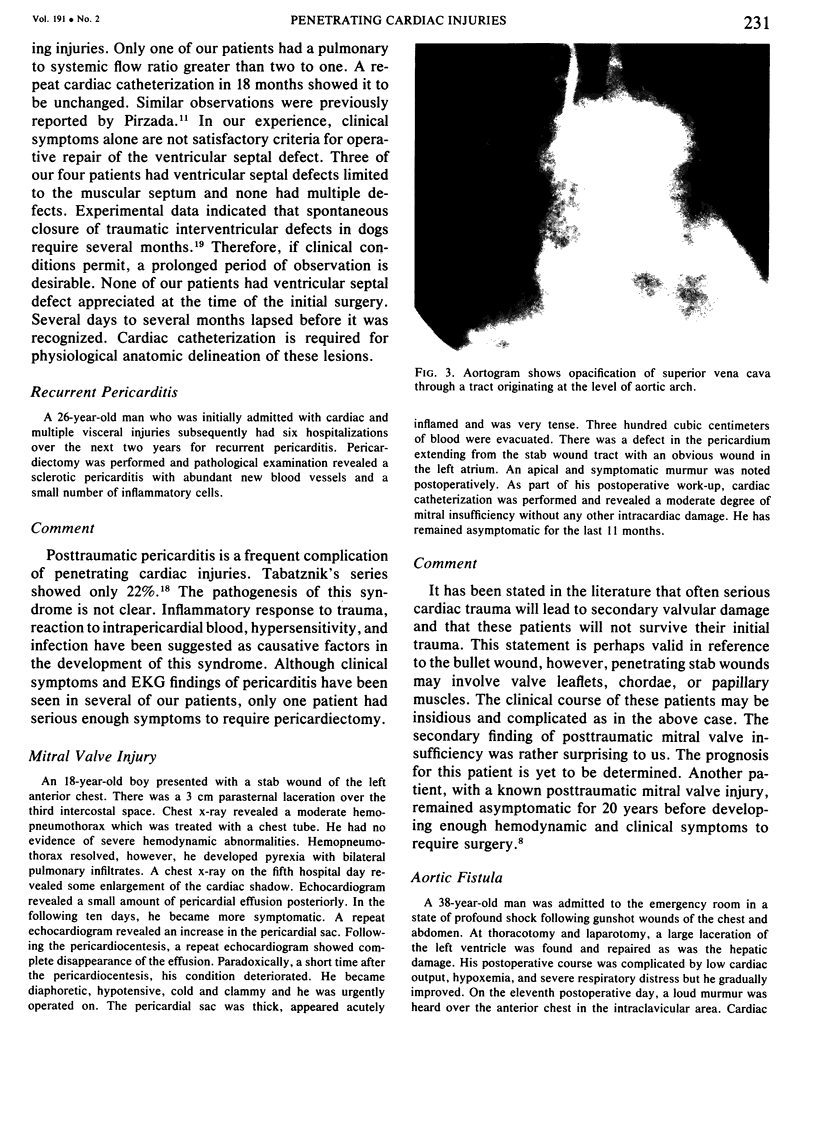
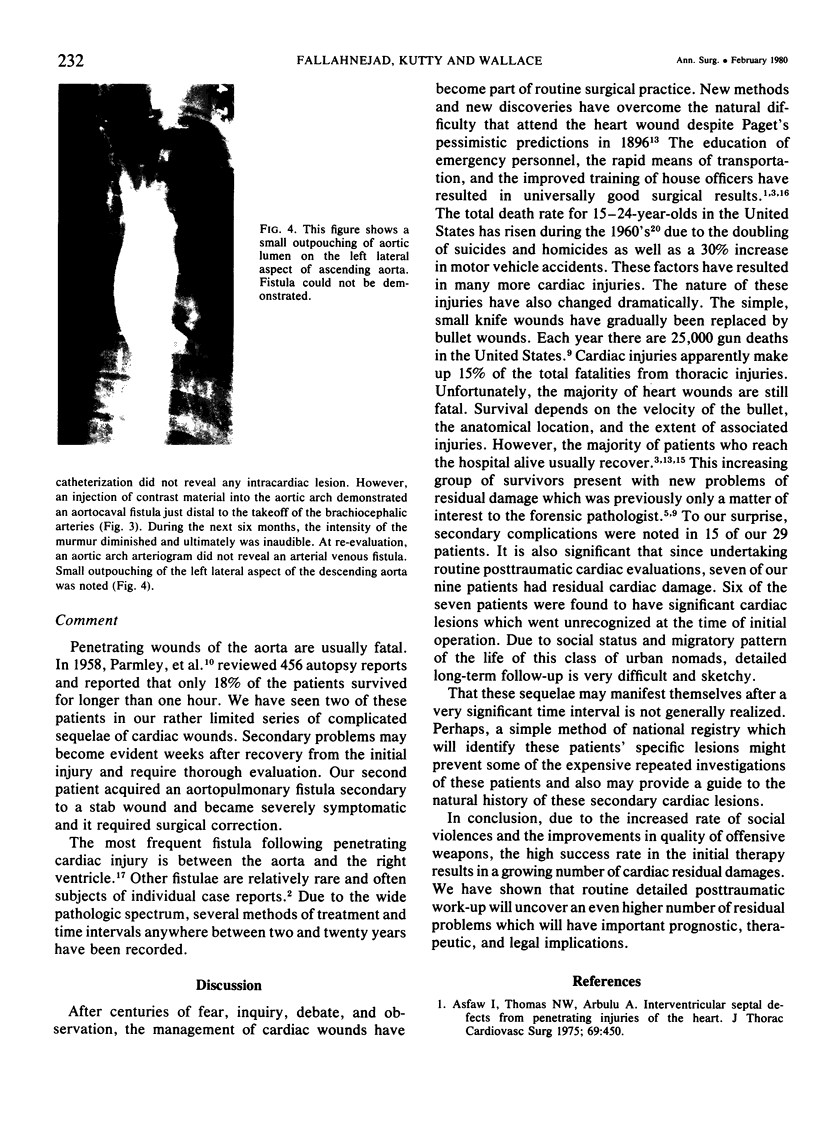
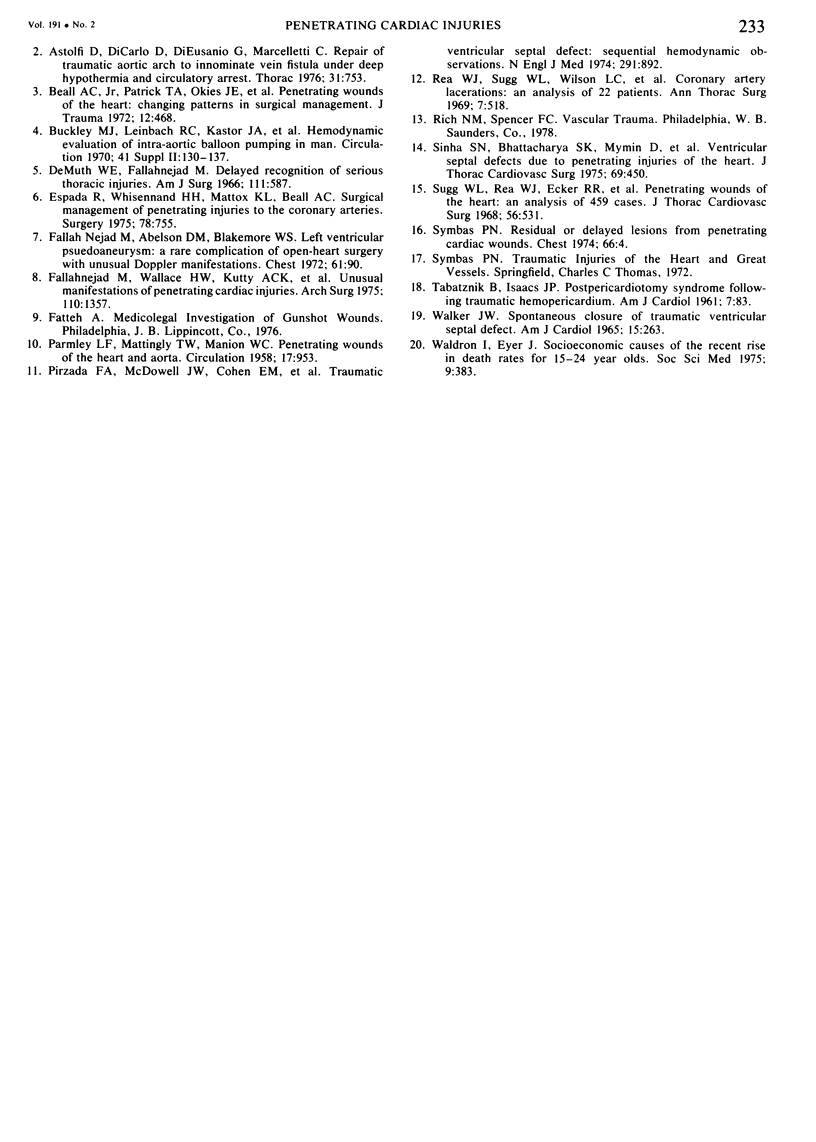
Images in this article
Selected References
These references are in PubMed. This may not be the complete list of references from this article.
- Asfaw I., Thoms N. W., Arbulu A. Interventricular septal defects from penetrating injuries of the heart: a report of 12 cases and review of the literature. J Thorac Cardiovasc Surg. 1975 Mar;69(3):450–457. [PubMed] [Google Scholar]
- Asfaw I., Thoms N. W., Arbulu A. Interventricular septal defects from penetrating injuries of the heart: a report of 12 cases and review of the literature. J Thorac Cardiovasc Surg. 1975 Mar;69(3):450–457. [PubMed] [Google Scholar]
- Astolfi D., di Carlo D., di Eusanio G., Marcelletti C. Repair of traumatic aortic arch to innominate vein fistula under deep hypothermia and circulatory arrest. Thorax. 1976 Dec;31(6):753–756. doi: 10.1136/thx.31.6.753. [DOI] [PMC free article] [PubMed] [Google Scholar]
- Beall A. C., Jr, Patrick T. A., Okies J. E., Bricker D. L., DeBakey M. E. Penetrating wounds of the heart: changing patterns of surgical management. J Trauma. 1972 Jun;12(6):468–473. doi: 10.1097/00005373-197206000-00003. [DOI] [PubMed] [Google Scholar]
- DeMuth W. E., Jr, Fallah-Nejad M. Delayed recognition of serious thoracic injury. Am J Surg. 1966 Apr;111(4):587–590. doi: 10.1016/0002-9610(66)90291-1. [DOI] [PubMed] [Google Scholar]
- Espada R., Whisennand H. H., Mattox K. L., Beall A. C., Jr Surgical management of penetrating injuries to the coronary arteries. Surgery. 1975 Dec;78(6):755–760. [PubMed] [Google Scholar]
- Fallah-Nejad M., Wallace H. W., Su C. C., Kutty A. C., Blakemore W. S. Unusual manifestations of penetrating cardiac injuries. Arch Surg. 1975 Nov;110(11):1357–1362. doi: 10.1001/archsurg.1975.01360170097014. [DOI] [PubMed] [Google Scholar]
- Fallah-nejad M., Abelson D. M., Blakemore W. S. Left ventricular pseudoaneurysm. A rare complication of open-heart surgery with unusual Doppler manifestations. Chest. 1972 Jan;61(1):90–92. doi: 10.1378/chest.61.1.90. [DOI] [PubMed] [Google Scholar]
- PARMLEY L. F., MATTINGLY T. W., MANION W. C. Penetrating wounds of the heart and aorta. Circulation. 1958 May;17(5):953–973. doi: 10.1161/01.cir.17.5.953. [DOI] [PubMed] [Google Scholar]
- Pirzada F. A., McDowell J. W., Cohen E. M., Saini V. K., Berger R. L. Traumatic ventricular septal defect. Sequential hemodynamic observations. N Engl J Med. 1974 Oct 24;291(17):892–895. doi: 10.1056/NEJM197410242911708. [DOI] [PubMed] [Google Scholar]
- Rea W. J., Sugg W. L., Wilson L. C., Webb W. R., Ecker R. R. Coronary artery lacerations; an analysis of 22 patients. Ann Thorac Surg. 1969 Jun;7(6):518–528. doi: 10.1016/s0003-4975(10)66391-6. [DOI] [PubMed] [Google Scholar]
- Reul G. J., Jr, Beall A. C., Jr, Greenberg S. D. Protection of the pulmonary microvasculature by fine screen blood filtration. Chest. 1974 Jul;66(1):4–9. doi: 10.1378/chest.66.1.4. [DOI] [PubMed] [Google Scholar]
- Sugg W. L., Rea W. J., Ecker R. R., Webb W. R., Rose E. F., Shaw R. R. Penetrating wounds of the heart. An analysis of 459 cases. J Thorac Cardiovasc Surg. 1968 Oct;56(4):531–545. [PubMed] [Google Scholar]
- TABATZNIK B., ISAACS J. P. Postpericardiotomy syndrome following traumatic hemopericardium. Am J Cardiol. 1961 Jan;7:83–96. doi: 10.1016/0002-9149(61)90426-x. [DOI] [PubMed] [Google Scholar]
- WALKER W. J. SPONTANEOUS CLOSURE OF TRAUMATIC VENTRICULAR SEPTAL DEFECT. Am J Cardiol. 1965 Feb;15:263–266. doi: 10.1016/0002-9149(65)90464-9. [DOI] [PubMed] [Google Scholar]
- Waldron I., Eyer J. Socioeconomic causes of the recent rise in death rates for 15-24-yr-olds. Soc Sci Med. 1975 Jul;9(7):383–396. doi: 10.1016/0037-7856(75)90139-0. [DOI] [PubMed] [Google Scholar]




